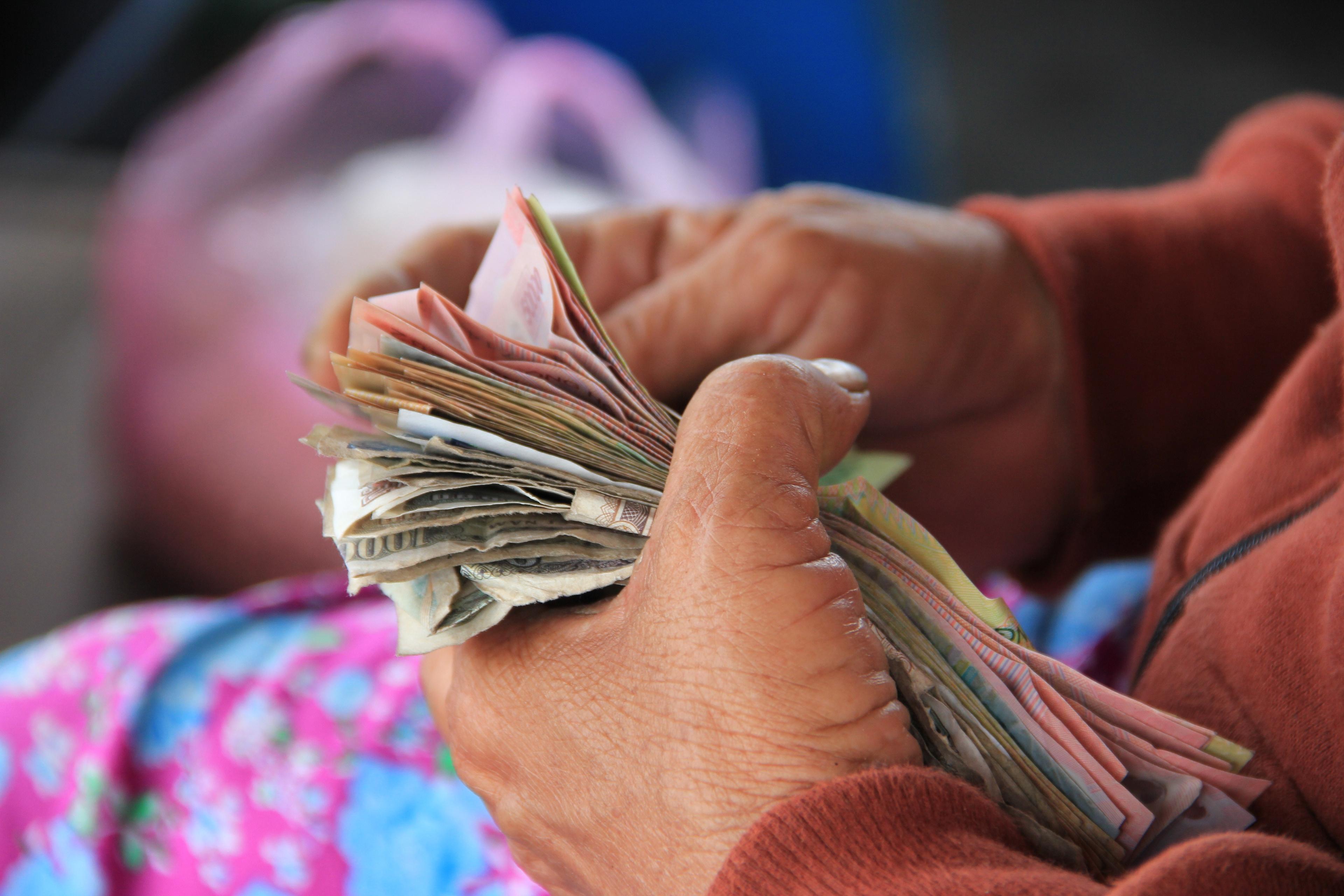Returning the ill-gotten gains of corrupt officials to their rightful owners has become a global priority since the adoption of the United Nations Convention against Corruption (UNCAC). Assets acquired through corruption and then transferred abroad are part of the broader phenomenon of illicit financial flows (IFFs), which deprive developing countries of their domestic resources. According to some estimates, tens of billions of dollars are lost to different kinds of IFFs from Africa every year. Asset recovery as envisaged by UNCAC offers a path to repatriate the share of IFFs that relates to corruption, although the total amount recovered so far pales in comparison to the estimated outflows. How can asset recovery serve development goals?
Defining IFFs
The concept of illicit financial flows (IFFs) refers to transfers of funds linked to illicit activities. Either the funds in question must have been accumulated illegally or the act of transference must have involved criminal behaviour. Generally, the term is applied when funds are transferred across national borders. At the same time, the word ‘illicit’ implies a moral judgement but does not necessarily refer to clear legal criteria. IFFs might stem from acts of corruption, for instance when a political leader embezzles funds and transfers them to bank accounts abroad. Other IFFs involve the proceeds of fraud or organised crime. In those cases, the flows result from illegal activity.
How does asset recovery work?
Asset recovery (AR) refers to gaining control over proceeds of crime by seizing them. When assets are located in a foreign jurisdiction, AR can serve as a countermeasure to IFFs. First, the process identifies and traces the assets in question, which may involve cross-border cooperation. Second comes the freezing of assets, which might again involve multiple jurisdictions. The third step is completion of the relevant procedures, which might be based on civil law or a confiscation that concludes criminal proceedings. This step depends on the gathering and exchange of evidence. Finally, international cases raise the questions of if and how funds will be returned to the country of origin.
At each step, international asset recovery may involve requests for mutual legal assistance (MLA). If, for example, prosecutors discover that a former public official has moved funds derived from bribery to another country, they can send a request to that jurisdiction to have the associated accounts frozen. The AR process then involves a ‘requesting state’ (harmed by the official’s corrupt acts) and a ‘requested state’ (in whose jurisdiction the funds are located).
Understanding the scale of IFFs
Estimating the scale of corruption and related phenomena is notoriously difficult. In the early 2000s, it was estimated that corrupt officials in developing countries diverted US$20–40 billion annually. Such figures, and others attempting to express corruption-related flows as a percentage of gross domestic product (GDP), must be treated as rough approximations. This is no surprise: corrupt behaviour is clandestine by nature, and there is no obvious way of gathering – let alone aggregating – data.
Methodological challenges notwithstanding, the NGO Global Financial Integrity (GFI) estimates that US$620–970 billion was transferred out of developing countries in 2014. Between 2005 and 2014, GFI claims that the average outflows reached 4.6–7.2% of the total volume of trade done by developing countries. The highest share of IFFs is attributed to China and other Asian economies. Trade-related IFFs out of Sub-Saharan Africa account for roughly US$36–52 billion annually. Another US$63–91 billion is attributed to flows from the MENA region, including Afghanistan and Pakistan.
The literature on IFFs offers three lessons. First, the figures cited in different publications are best understood as educated guesses rather than precise measurements. Second, virtually all observers agree that IFFs are a global phenomenon but are more damaging for developing countries. Despite the lack of precise measurements, multiple sources estimate that IFFs from Africa exceed debt and official development aid. Third, the concept of IFFs has been successfully used by advocates addressing corruption, money laundering, and taxation.
Are global asset recovery efforts slowing down?
It is difficult to estimate the scale of completed and ongoing AR efforts. No centralised mechanism exists to automatically aggregate information. Recent academic publications still rely on a list compiled by Transparency International in 2004 to illustrate the most significant cases of international asset recovery. However, nobody knows exactly how much money corrupt political leaders have hidden abroad.
An analysis of 240 cases listed on the Stolen Asset Recovery (StAR) website as of April 2018 shows that around the year 2000, AR appears to have gained momentum. An increase in cases in 2011 shows the surge of investigations in the wake of the Arab Spring. Aside from this surge, the annual number of new cases has not continually grown since UNCAC was established in 2005, which suggests there are obstacles to enforcement. Despite the moderate number of ongoing cases, they still involve massive foreign assets under dispute: the mean value is US$450 million, with the median case still valued at US$22 million. The United States, the United Kingdom (including territories), Switzerland, France, and Germany are the top destinations among StAR's database. States from outside the Organisation for Economic Co-operation Development (OECD) are the most frequent victims of large-scale corruption leading to AR cases.
Practitioners and researchers assessing the status of AR efforts around the globe face a sobering reality. There is some data on completed and ongoing cases, but it is incomplete, and many jurisdictions are missing entirely. Also, the increasing efforts to freeze funds do not automatically translate into their return. According to OECD and StAR data, the volume of assets returned between 2010 and 2012 was US$147 million, therefore lower than the US$246 million returned between 2006 and 2009.
Developments on the horizon
The efforts led by StAR will soon be boosted by UNCAC’s own monitoring mechanism. Since 2009, the anti-corruption convention is subject to a mechanism of peer review, coordinated by the Implementation Review Group (IRG). Its current cycle addresses the treaty’s provisions for AR. Officials from the United Nations Office on Drugs and Crime (UNODC) have argued that this will create unprecedented momentum for AR, and complement and continue the positive developments in recent years.
During 2018 and 2019, the IRG has been discussing guidelines for the management of frozen, seized and confiscated assets. These international efforts have been matched by laws and policies in several key jurisdictions, such as the United States, Switzerland and the United. EU initiatives that target money laundering and the European ‘misappropriation’ foreign policy sanctions also provide leverage in AR cases.
Focus on what works
Proponents of AR must identify what works and what does not. UNCAC, OECD, and StAR should strive to make AR more transparent, by collecting systematic data and publishing fine-grained information for as many countries as possible. UNCAC’s peer review collects information on AR and encompasses the widest possible range of countries; this potential should be used.
Successful implementation of AR depends not just on technical expertise, but on the broader political conditions in both requesting and requested states. The financial resources and staff allocated to MLA and AR shape outcomes. Unless other policy objectives are aligned with development goals, recent commitments to curb IFFs and recover stolen assets will not live up to their promises. Aside from the politics of international asset recovery, attention must be paid to what happens in financial centres around the world, which boast a wide range of services catering to affluent foreigners. In addition to practical steps to improve implementation, practitioners should keep their eyes on the broader political environment.


